Weekly birding round-up: 15 - 22 August 2025
Just when the week looked like it was trundling towards a quietish conclusion, Gloucestershire pulled an absolute stonker out of the bag. Summer’s handing over to autumn now, so whether this counted as the last hurrah of the halcyon days, or the fanfare herald of the year’s main event is a moot point. And speaking of knotty birding problems, just how many Zitting Cisticola were in Britain last week?
Were it not for events of 2023, the breaking news this week in the evening of 20th that there was a Black-winged Kite in Gloucestershire might have been slightly more evening-wrecking, galvanising news. Though try telling that to the county’s birders, for whom it was the call to abandon dinner and family commitments and head towards Frampton with all haste…
Found initially at Splatt Bridge, it was mobile, latterly seen heading south, and later still proving visible at Slimbridge WWT, albeit after the reserve had closed. A walk was in order… It stayed put here until the late evening before heading off north again, and wasn’t seen thereafter until nightfall. First thing on 21st it was still in the area, but then it vanished…
We were spoiled rotten for Black-winged Kite in 2023 – the year had the drama of news of Britain’s first confirmed record in Powys in April, then twitchable opportunities in Norfolk, Suffolk and Essex in July. We’d waited ages for our first bird, and oh boy did it oblige.
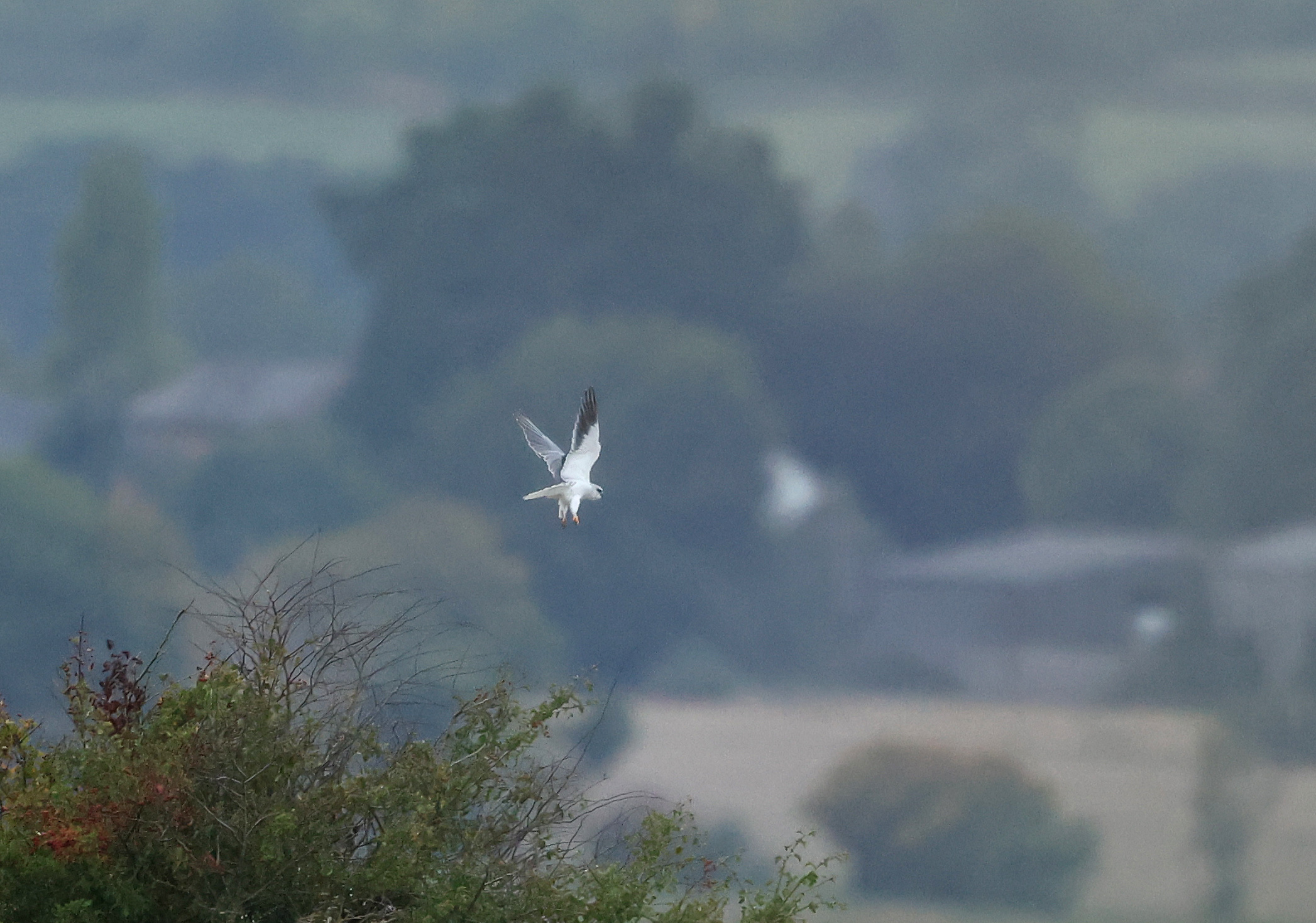
But last year… nothing doing. They were knocking on our door again though, flirting with us across the water in the Channel Islands. One was seen on Jersey on 1st December 2024, and as recently as 29th July this year, another sighting came from Alderney.
Stunning. Black-winged Kite gracing the skies above Glos. #GlosBirds pic.twitter.com/juJJkgN2CK
— Mark Dowie (@MarkDowie) August 21, 2025
And now, this week, we’ve got another bird on our hands in Britain. A county first for Gloucestershire, and a welcome one at that. It’s a little early to say that the floodgates have opened for the species (seeming a la Zitting Cisticola, more of which shortly), but birds in two out of the past three years bodes well for us. Where next for a county first?
It’s been a good while since we’ve enjoyed a good two-bird theory. You remember those? The uncomplicated kind, concerning whether there’s one or in fact two examples of a rarity on our hands.
(Not the crushing kind, where a claim of a stand-alone rarity is casually batted away by someone else present with a withering putdown. “Where in relation to the Sedge Warbler?” That sort of thing).
Which leads us to Suffolk this week, where the singing male Zitting Cisticola remained at Walberswick on 15th-21st. So far, so good. Intriguingly though, some reports came of two birds being present there, news that on 17th seemed to have enough confidence behind it that it hit the birding newswires as such… but that was the only day on which that happened. Before, and after, caution remained the watchword, with just the evident singing male being reported daily.
(Except in the more excitable corners of the internet, where the situation was being reported as a breeding pair of birds. Which in Suffolk may yet prove to be the case, of course, or may never be resolved; or may in time prove to happen somewhere else in Britain entirely…)
Had a great few hours at Lydd Ranges to see the Zitting Cisticola today, good to see lots of other Kent birders too. Life ? pic.twitter.com/blQx9Je3p1
— Glenn Honey (@glennh534) August 17, 2025
And the latter outcome may be sooner than later, the way things are going for Zitting Cisticola records this year. For Kent was to score yet another bird this week, and another territorial male at that, found in song at Lydd Ranges on 17th, and still present there on 21st. Maybe they’re going to go all Cetti’s Warbler on us, crossing the English Channel and setting up shop in short order on our shores…
Seawatching on the whole grew a whole lot quieter this past week, and this was amply demonstrated by Wilson’s Petrel, whose numbers dived from nearly 200 recorded in the preceding week to around 40 in the week just gone. As ever, the Scilly pelagics had the best of it, with a peak count of 12 seen on 17th.

Another Leach’s Petrel was logged from the ferry between Ullapool and Stornoway (Highland & Caithness / Western Isles) on 17th, while Fair Isle (Shetland) recorded an individual on 18th.
A Fea’s Petrel sp was seen heading north past North Ronaldsay (Orkney) on 19th; and another on 20th from Nybster (Highland & Caithness).
Large shearwaters were conspicuous generally by their relative absence – some 240 Cory’s Shearwater were logged this week, with a peak count of 120 seen from Tory Island (Co.Donegal) on 16th; and around 65 Great Shearwater in Britain and Ireland as a whole.
Numbers of Balearic Shearwater on the other hand did a little better, though still not setting the world on fire – 400 were logged in recent days, with a peak count of 177 seen from Berry Head (Devon) on 17th.
Some 35 Pomarine Skua were again noted during the past week; while numbers of Long-tailed Skua lifted a smidgen, with around 60 birds reported in recent days, albeit surely some of these seen off the Norfolk and northeastern English coasts involved some duplication between well-watched sites – that said, 10 were seen on 20th from Sheringham (Norfolk) alone.
Still top of the weekly class of long-legged beasties, the juvenile Black Stork remained in Suffolk at Boyton Marshes RSPB on 15th-21st.

The week proved to be a good one for Night Heron for, in addition to the settled adult still present at Marden Quarry (Northumberland) on 15th-21st, a number of additional birds were logged – up on Shetland, a first-summer bird on Unst on 19th wasn’t the Greenish Warbler local birder Brydon Thomason was hoping to find, but represented yet another addition to one of Britain’s largest house-lists; and further birds were found on 19th near Budleigh Salterton (Devon), and at North Cave Wetlands YWT (East Yorkshire), this latter bird remaining there on 20th-21st.
A Purple Heron was seen on 20th at Swineham Point (Dorset). Cambridgeshire sightings came on 21st from Fen Drayton Lakes RSPB and Burwell Lode.
Sightings of Glossy Ibis picked up this past week, with around 20 birds reported mainly across England, with an outlier still on Sanday (Orkney) on 19th, and a peak count of four birds in Hampshire seen in flight over Hayling Island on 21st.
Once again, the waters of the rarity duckpond remained largely unruffled this week. Starting with Lesser Scaup, the two drakes remained at Belvide Reservoir (Staffordshire) on 15th-21st, while the drake also remained at Audenshaw Reservoirs (Greater Manchester) on 16th-20th.
The eclipse drake Ring-necked Duck remained at Ogston Reservoir (Derbyshire) on 18th-20th, and the recent drake remained at Fen Drayton Lakes RSPB (Cambridgeshire) on 17th-20th.
The female Ferruginous Duck was again to be seen at Shawell (Leicestershire) on 15th-20th.
A possible Blue-winged Teal was seen in flight at Chew Valley Lake (Somerset) on 20th.
Finally for the quackers, in Scotland the immature drake White-winged Scoter was still at Musselburgh Lagoons (Lothian) on 15th-16th, and the drake at Kinnaber (Angus) on 17th; and the drake Surf Scoter still present at Musselburgh Lagoons on 15th-21st.
But what’s this? A honker? Yes, a Snow Goose on 20th at Mossblown (Ayrshire).
Not a great deal of change to report in the make-up of our weekly waders, somewhat disappointingly at this stage in the annual game.
A Pacific Golden Plover made a fleeting appearance in Norfolk at Waxham on 16th.
Meanwhile American Golden Plover were represented by one still on North Ronaldsay (Orkney) on 15th-20th, and the lingering bird on Rogerstown Estuary (Co.Dublin) still on 15th-18th.
A Dotterel was seen near Polgigga (Cornwall) on 20th, and another on the cliff top at Seven Sisters CP (East Sussex) on 21st.
The Buff-breasted Sandpiper remained on Myroe Levels (Co.Derry) on 16th.
Lingering White-rumped Sandpiper remained at Beacon Ponds NR (East Yorkshire) on 15th-17th, with two there again on 16th; at Snettisham RSPB (Norfolk) still on 16th; at Gibraltar Point NNR (Lincolnshire) still on 15th; at Frampton Marsh RSPB (Lincolnshire) again on 16th; and Thorntonloch (Lothian) still on 20th. A new bird settled in Suffolk at Hazlewood Marshes SWT on 17th-21st; another was seen briefly at Cob Pool (Anglesey) on 19th; and on 20th Irish examples were found at Blanket Nook (Co.Donegal), and Lady’s Island Lake and Tacumshin (Co.Wexford), the Lady’s Island Lake bird remaining there the following day.
The long-staying first-summer Ayrshire Western Sandpiper abandoned Maidens for Turnberry on 18th-20th.
In Cumbria this week two Pectoral Sandpiper were noted at Wedholme Flow on 16th. Singletons were seen in recent days at Alkborough Flats NR (Lincolnshire) on 15th-20th still; Dowrog Common (Pembrokeshire) on 15th; Lady’s Island Lake (Co.Wexford) on 16th; and Manby Flashes (Lincolnshire) on 19th-21st. Another was seen on 19th-21st at St Aidan’s RSPB (West Yorkshire); one was found on 20th at Loch Leven (Perth & Kinross); and a final bird on 21st on Mersea Island (Essex).
A Temminck’s Stint lingered at Frampton Marsh RSPB (Lincolnshire) on 15th-16th. On 21st Ireland upped the ante with birds at Lissagriffin (Co.Cork) and Tacumshin (Co.Wexford).
A Long-billed Dowitcher remained at Tacumshin (Co.Wexford) on 15th-20th, joined there by a second individual on 16th. Another pitched down on North Ronaldsay and Sanday (Orkney) on 19th.
Both recent Lesser Yellowlegs was again seen this week in northern and southern England alike – one was again at Leighton Moss RSPB (Lancashire & North Merseyside) on 18th and 20th-21st; and the Hampshire bird was once more seen at Keyhaven on 16th.
A juvenile Marsh Sandpiper was seen at Dawlish Warren NNR (Devon) on 20th.

Single Grey Phalarope were seen from the Scillonian on 15th, and from Tory Island (Co.Donegal) on 16th; while Red-necked Phalarope were seen in Shetland on Fair Isle on 16th, and Out Skerries on 18th.
Finally, a Black-winged Pratincole was reported from Carnoustie (Angus) in the morning of 16th.
Onto the gulls’n’terns, and the best of them was once more the first-summer Laughing Gull again at Trabeg (Co.Kerry) on 17th and 20th.
In Kent the adult Bonaparte’s Gull remained settled at Oare Marshes KWT on 15th-21st; further adult birds were noted this week at Crinan (Argyll & Bute) still on 15th, and at Iverallochy (Aberdeenshire) still on 15th-21st.
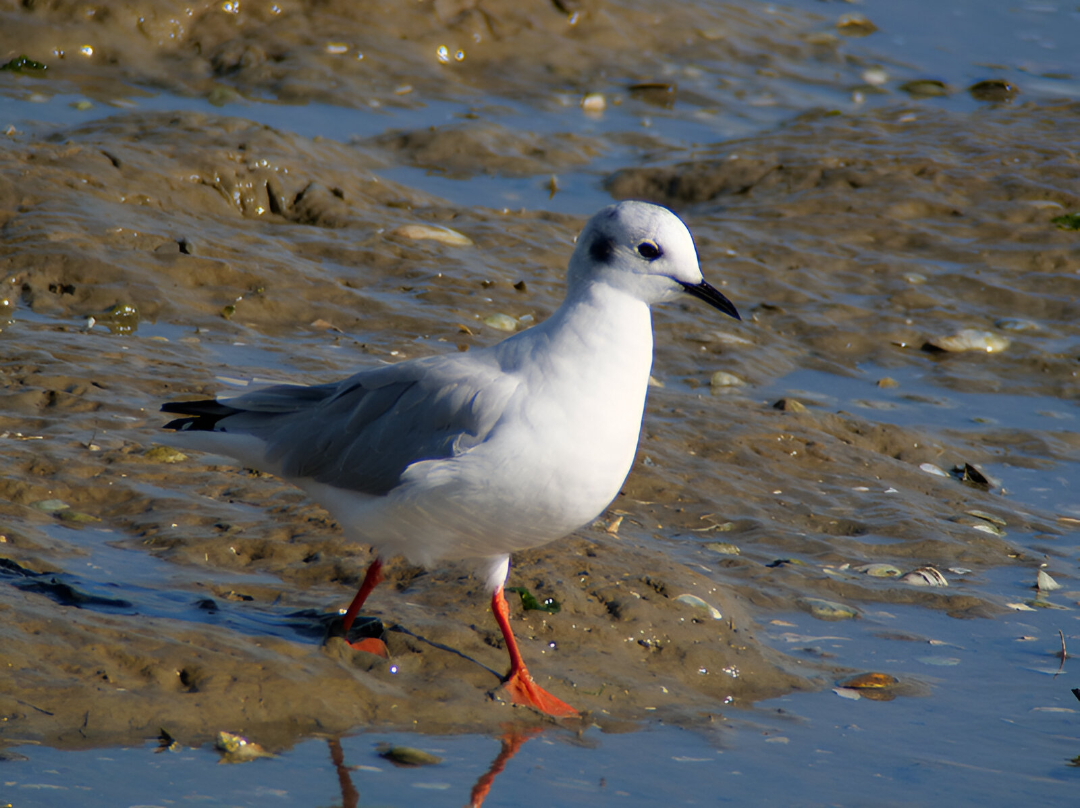
An adult Sabine’s Gull lingered at Pettycur (Fife) on 18th-20th, preceded by Fife sightings on 15th at St Andrews and Out Head; while additional birds were seen from the Scillonian on 15th and 19th; and from North Ronaldsay (Orkney) on 17th. On 20th sightings came from St Abb’s Head (Borders), Seaham (Co.Durham), and Flamborough (East Yorkshire). On 21st a possible was off South Gare (Cleveland), and confirmed birds at Church Point (Northumberland) and from the Scillonian again.
Finally, Kent gave us sightings of juvenile White-winged Black Tern at Leeds Castle on 18th, and Oare Marshes KWT on 19th-20th.
Cornwall gave us a Black Kite at Skewjack on 15th, and Polgigga on 16th; another was reported from Chipping Norton (Oxfordshire) on 18th; and one more on 21st at Ormesby Little Broad (Norfolk).
With the closed-ringed Saker on Scilly lately a cautionary tale to heed, another was still present in a garden near Filey (North Yorkshire) on 16th, having been present in the area for a week beforehand.
Straight into the warblers again this week, we start the passerines section with another Aquatic Warbler, trapped and ringed at Uskmouth NR (Gwent) on 19th.
Also trapped and ringed this week was the male Eastern Subalpine Warbler on Fair Isle (Shetland) on 20th; a Subalpine Warbler sp was found on St Mary’s (Scilly) on 21st.
Also hitting the ringers’ nets this week, a Blyth’s Reed Warbler was trapped and ringed on 16th at Stanford Reservoir (Northamptonshire), and a Marsh Warbler at Spurn (East Yorkshire) on 16th.
A couple of Greenish Warbler were found lately – at Lowestoft (Suffolk) on 16th-18th, and on Fair Isle (Shetland) on 18th.
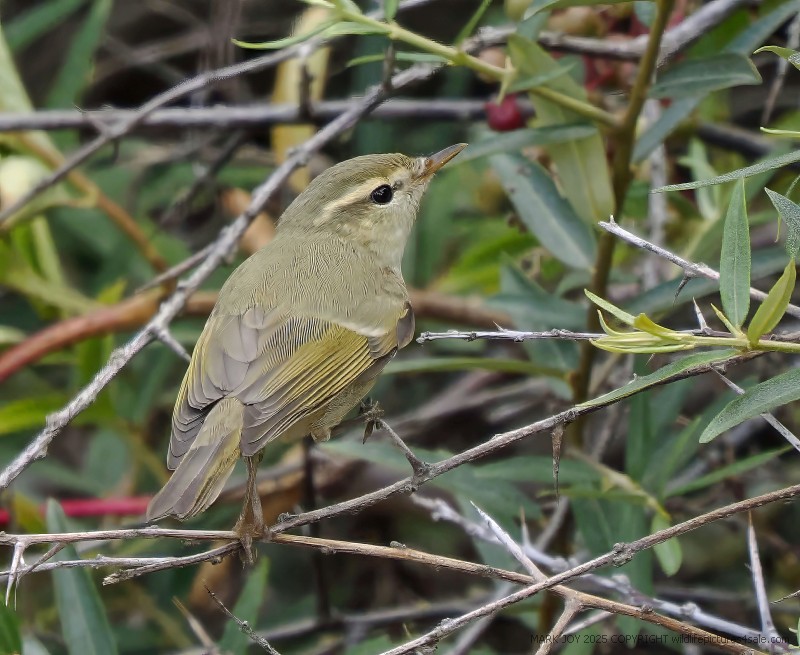
Down on St Mary’s (Scilly) the recent Western Bonelli’s Warbler remained present on 15th-20th, with one on Gugh on 20th; while another was present on Skomer (Pembrokeshire) on 16th-21st.
Neighbouring Skokholm (Pembrokeshire) retained a Melodious Warbler on 16th-20th.
Icterine Warbler meanwhile were found on 18th at Dungeness (Kent) and on North Ronaldsay (Orkney); on 19th on St Mary’s (Scilly); and on 21st in East Yorkshire at Easington and Spurn.
Booted Warbler arrived with a bang on 21st, with birds found in Essex at Holland Haven, and on Grassholm (Pembrokeshire).
Shetland landed a couple of Barred Warbler in recent days – one at Grutness on Mainland on 18th, and another on Fair Isle on 15th-20th. Stanford Reservoir (Northamptonshire) was having a good week for the ringers, with another example of this species ringed here on 20th, augmenting the earlier Blyth’s Reed Warbler they’d enjoyed.
Stanford Reservoir - the ringing group deliver again. In crappy conditions with low bird numbers a 1st for the site & for Northants - BARRED WARBLER. Well deserved for the dedicated efforts of the group in their 50th year ringing at the site. Haven’t sweared so much for a while!! pic.twitter.com/VQGzRME2BS
— Stanford Birder (@c4hub) August 20, 2025
Fair Isle could also boast a Red-backed Shrike on 15th-21st.
Some 25 Wryneck were logged over the course of the week, marking an upturn in their numbers. A couple of Hoopoe were also noted – one at Sandwich Bay (Kent) on 15th; and the other at Sennen Cove (Cornwall) on 17th.
Today's #Wryneck at Devon's #HopesNose was mobile and elusive late morning before giving itself up below the second bench on the south side at c13.30. Glad @BrianCroad, M Pound and J Baker connected before I left. A good bird for the site ??. pic.twitter.com/KEuVFO26t2
— Shiphay Birder (@ShiphayBirder) August 19, 2025
The first Citrine Wagtail of the autumn was found on 21st on South Uist (Western Isles).
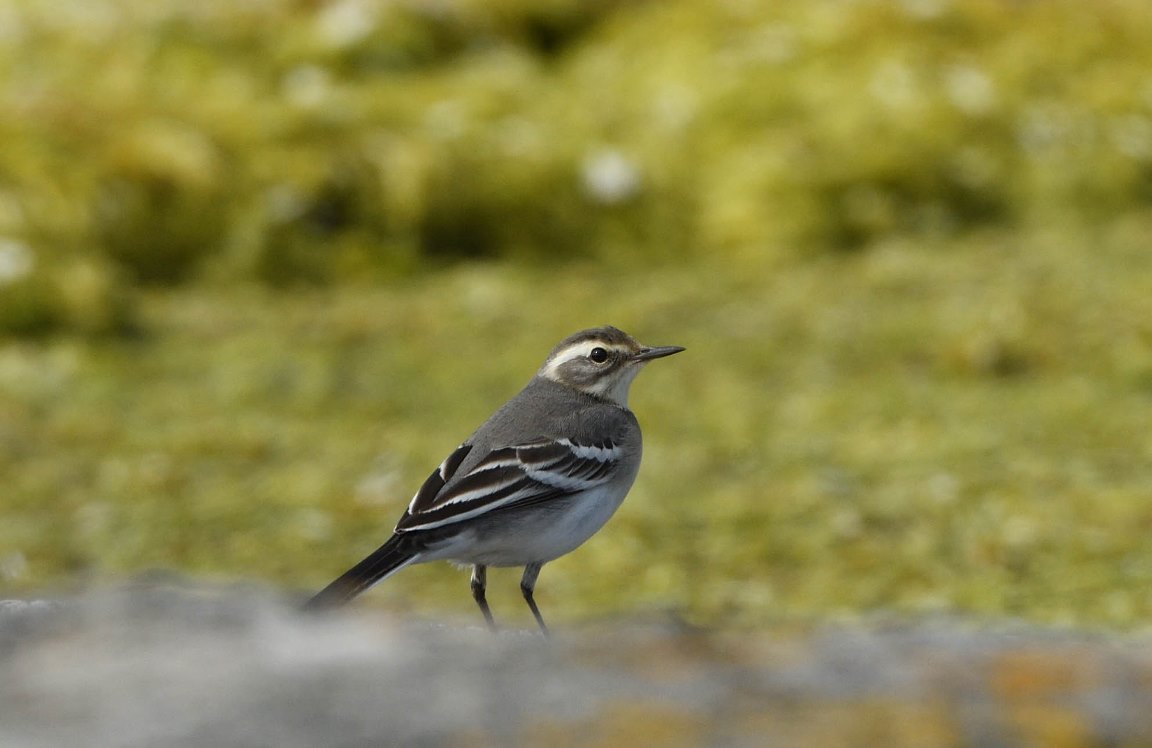
A Common Rosefinch was found on Shetland Mainland at Hillwell on 17th.
And finally, an Ortolan Bunting was in West Sussex at Steyning on 15th.
In Spain, the resident Cape Gull remained at Laredo on 15th-18th; while an Elegant Tern was still to be seen at Playa de Montijo on 17th. A White-tailed Lapwing was seen on 20th on the Ebro Delta at Ponts del Rei.
France meanwhile held onto the dark morph Western Reef Heron at Decize on 18th, and scored a South Polar Skua on 21st in Audierne Bay.
Just one more week of what may, or may not, still be summer lies ahead of us as we race towards September and what we may, with mounting confidence, start to comfortably refer to as autumn. And what might the last days of August have in store for us?
Waders, seabirds, blah, blah, blah. Sure, they’re both still statistically likely to feature in some prominent way, shape, or form in the coming week. But let’s not rule out the mounting possibility of something good in the passerine department.
With a waft of easterlies across the North Sea, we’re in the territory of a Thrush Nightingale or a Citrine Wagtail, both excellent self-finds for the east coastal patch-worker. And if we get a decent westerly blow, the coming week has real pedigree for something luminous from America. And we’re not talking about the US president – his arrival on these shores is still a few weeks off. But Yellow Warbler, that’s a possibility – the coming week boasts four records of this colourful rarity. And that would be a mega find for whomever is thus blessed.
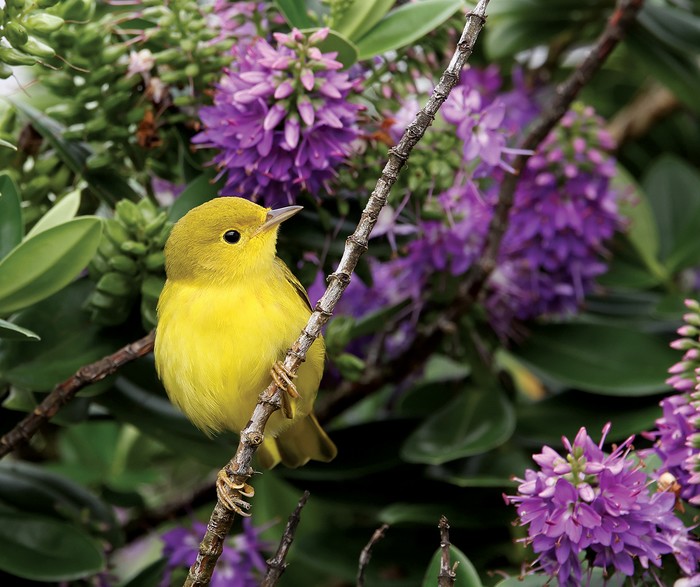
Jon Dunn
8 August 2025
Many thanks to all this week's contributors for your photos and videos
Share

















